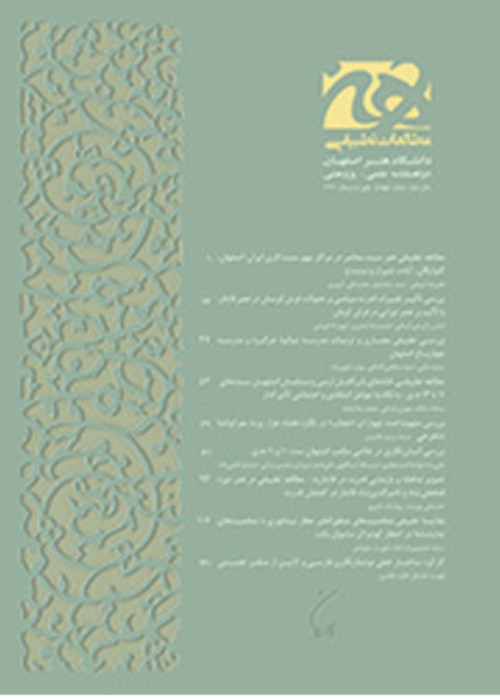A Comparative Study and Analysis on Motifs of Pottery in Kahnek Site and Traditional Kilim Motifs and Contemporary Mentally-weaved Rugs in Sarbisheh county in South Khorasan province
Sarbisheh County in the south Khorasan province has always been affected by the cultural and social behaviors of the immigrants and nomadic tribes, due to its special geographical location. The result of these immigration impacts is shown in the present paper to illustrate the relationship between the pottery motifs obtained from the four chapters of the archaeological excavation of the area of Kahnek in Sarbisheh and the motifs used in the traditional hand-woven of this area, especially mentally-weaved rug and Kilim. It is tried to examine the possible similarities and/or differences in designs and authenticity on local heritage practices in these handmade things, deemed as masterpieces created by the Bohlouli -Baluchi tribes and the native art of the city. The main question to be answered is whether there exists a meaningful relationship between the aforementioned motifs and what areas are possibly involved in such relation. By using a descriptive-analytical method, a comparative is made on extracted drawings. To do so, field data collection, imaging of samples, interviewing with artists and studying library documentation are used. The study shows that there is a meaningful relationship in drawings of traditional pottery and handicraft motifs in the region. Simplicity and combination of geometric designs together with abstract designs inspired by plants, objects and nature are among the most common motifs that can be easily observed, however, human designs cannot be identified in Kahnak pottery (except in a number of hand-woven things). The use of motifs and similar forms in pottery and hand-wovens in the region clearly demonstrates the impact of culture, environmental conditions, beliefs and ideology on the art works. Having not found any similarities in case of some pottery motifs, it was inferred that they might be adopted from other regions, most likely from Neyshabour pottery species.
- حق عضویت دریافتی صرف حمایت از نشریات عضو و نگهداری، تکمیل و توسعه مگیران میشود.
- پرداخت حق اشتراک و دانلود مقالات اجازه بازنشر آن در سایر رسانههای چاپی و دیجیتال را به کاربر نمیدهد.



